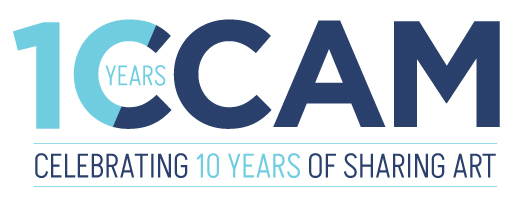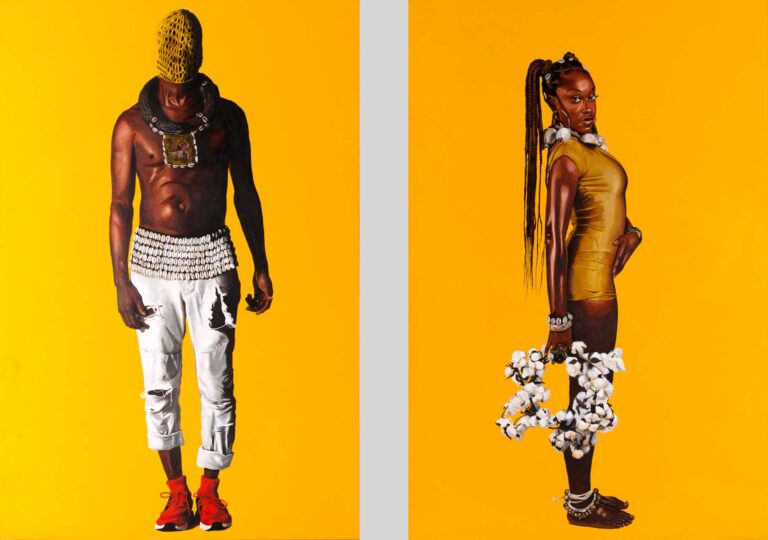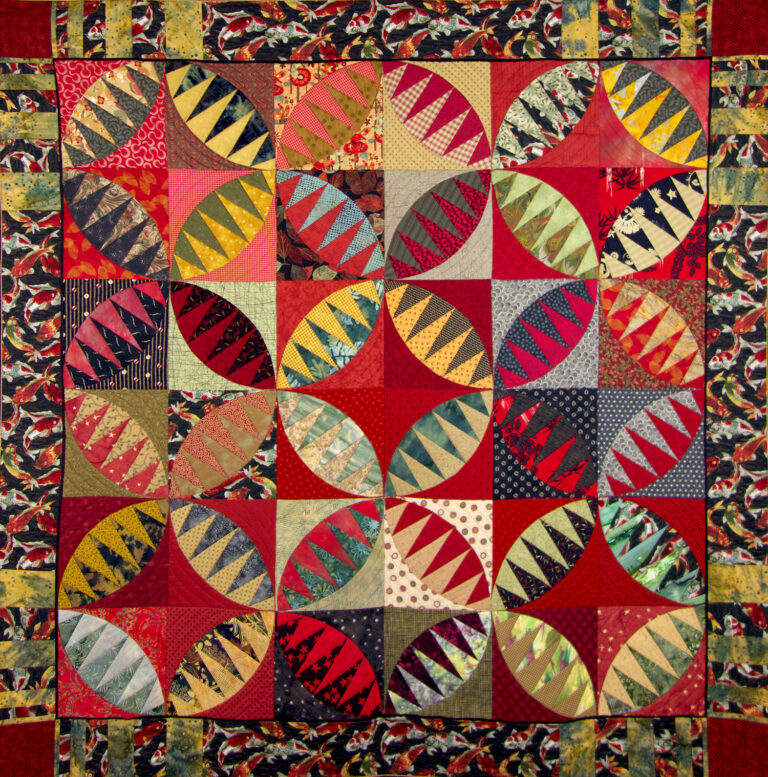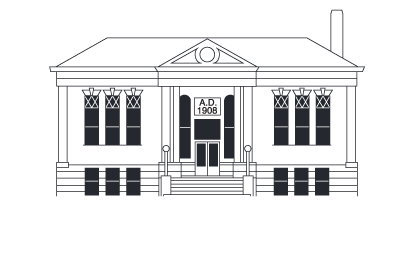Letter to Peter Parker, Hetain Patel, India
During a five-week trip in April and May 2015, Karen and Robert Duncan and Kathryn and Marc LeBaron circled the globe to see art, meet artists and identify works that would complement their collections. The Duncans acquired the 41 works in the exhibition on this memorable world art adventure.
In considering this Clarinda Carnegie Art Museum exhibition, one is struck by the degree to which the works transcend nationality. For that reason, they are not grouped by country but are loosely organized by concept.
The exhibition is a reminder that people all over the world live their lives managing those things for which they are responsible and that are within their power – their behaviors, their jobs, their children – and embracing, tolerating, resisting or trying to change those things that are beyond their control. Artists’ imaginations tend to reside in the latter sphere— in those areas that confound, inspire, frustrate, intrigue, anger, amuse and haunt them.
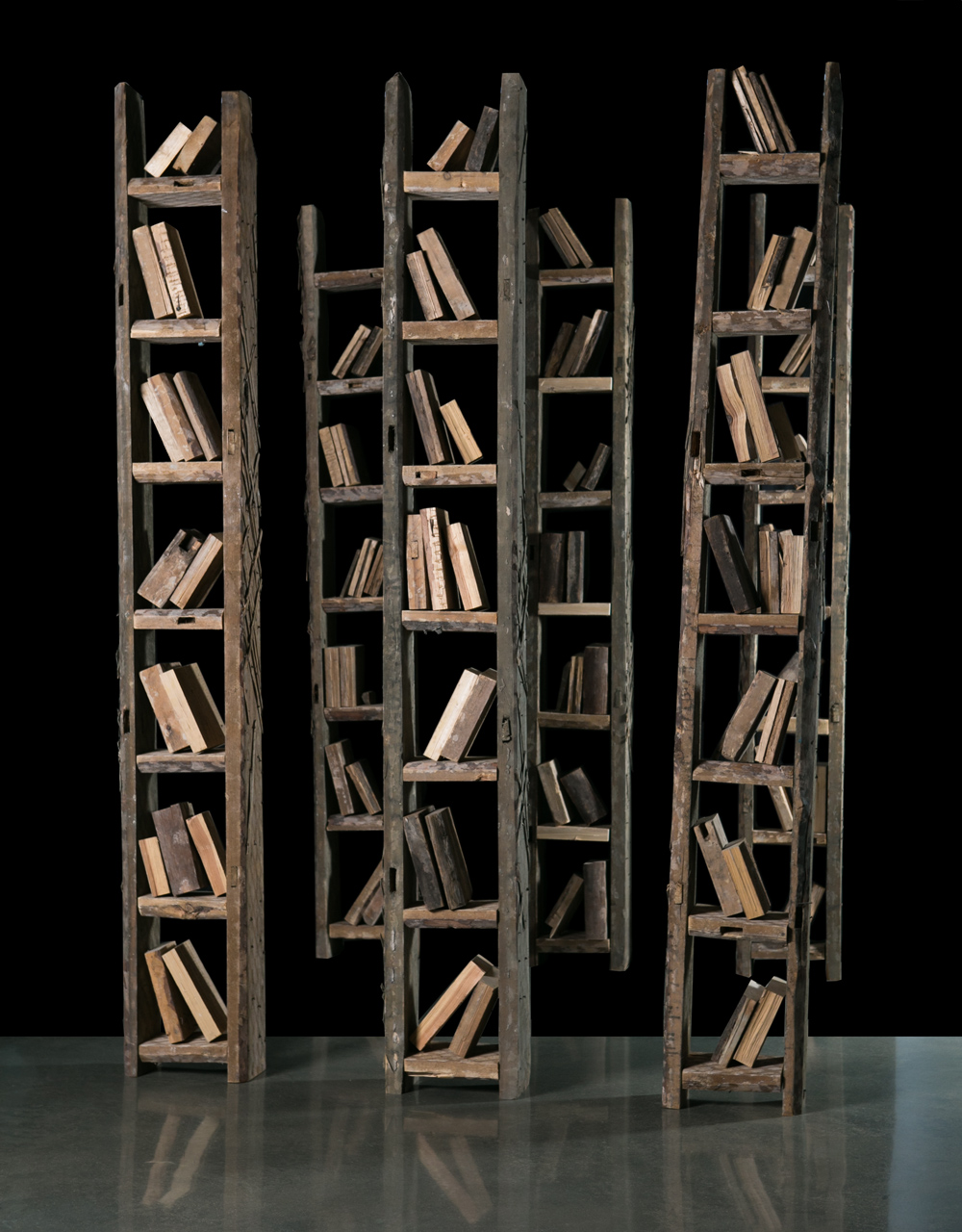
Pinocchio’s Library, Peter Belyi, Russia
While the LeBarons and Duncans encountered spoken languages that changed country by country, the visual languages of the art they saw crossed national borders. A viewer from any nation is likely to see Atul Dodiya’s Farewell – a shop shutter encasing a painting of a skeletal figure and a poem by Federico Garcia Lorca – as a commentary on grasping life’s sweetness until the moment of death. A citizen of any country would equate Lovisa Ringborg’s preschool child whose arm is emblazoned with a Death before Dishonor tattoo as an unsettling statement on children’s vulnerability to an adult world.
Human relationships engage artists everywhere. Swedish artist Lena Cronqvist explores family dynamics through the eyes of children. Marina Fedorova of Russia and Camille Zakharia of Lebanon view life through prisms of words and images . . . family photographs, letters, newspapers, magazines and historic film.

Lenin’s Science Makes One’s Hands and Mind Stronger, Gregori Maiofis, Russia
Even where issues are not shared internationally, the proliferation of data and its instantaneous availability engender empathy and understanding. Russia’s militaristic government and Saudi Arabia’s oppressive treatment of women are familiar issues. Manal AlDowayan’s works recognize that discriminatory practices involving Middle Eastern women have no cultural or religious basis. Likewise, Mouneer al Shaarani seeks to uncouple calligraphic texts from the “golden cage” of religion that political powers have imposed in recent times. It doesn’t take experience of these issues to know their gravity.
Artists worldwide are creating works that respond to cultural, environmental and political obstacles. Many express their concepts allegorically. Others portray their ideas lyrically. These may be trends or simply the good fortune of collectors who respond to these attributes. Either way, these works are ideal for the Duncan Collection and offer an engaging look at today’s world.
The Building of Three of a Kind
(Lower level exhibition)
This exhibition includes a project video and photographs taken by Roger Bruhn that cover the incredible teamwork involved in the creation of world-renowned artist Patrick Dougherty’s Three of a Kind, from the harvesting of fresh saplings to completion of three monumental structures.
